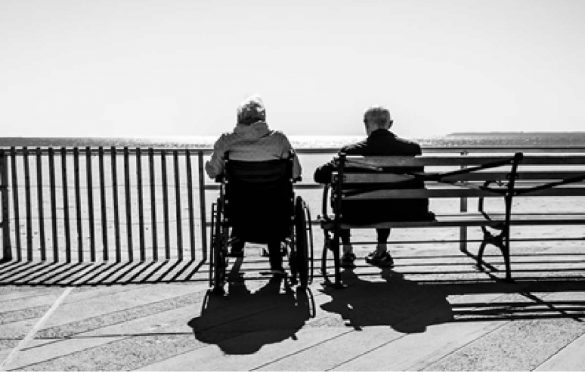5 Reasons Why Getting Old is Actually a Disease According to Aging Science

We talk about human aging like it’s the end of the world. But what actually happens when our bodies get older? If we can preserve items like vintage furniture and antiques and restore them like they’re good as new, why can’t we do the same for our bodies?
Table of Contents
There are benchmarks for aging
Aging science has tried to pin down the markers of the aging process. One review enumerates nine hallmarks of aging in different species. This means that the rate of aging can and does differ depending on a variety of factors, especially in older adults.
With the advancement of aging science research, they are able to specifically identify which processes can be pharmaceutically intervened. In other words, if we can identify certain causes, we can find a way to do something about them.
Aging research suggests that cancer and aging share similar origins
In terms of cell biology, aging and cancer share the manifestation of the same process: cellular damage. Both are an accumulation of cellular damage. While cancer cells become abnormally strong to the point they can invade other cells, in aging, this can also happen in the form of processes like increased activity of inflammatory pathways, which significantly drive aging.
This similarity causes experts to think that targeting the processes which affect aging can delay it to an extent. One such way was to figure out which molecules or systems are diminishing in the aging process. Suffice to say that many discoveries were found on that front.
You are losing important molecules as you get older
One such outstanding discovery about aging was that one particular molecule (in this case, a coenzyme) plays a significant role in all of the important biological processes in our bodies.
Nicotinamide adenine dinucleotide, or NAD+, is a molecule that is almost as abundant in our bodies as water. It is essential to a variety of biological functions like metabolic processes that generate cell energy, recharging enzymes that repair DNA damage, and even affect cognitive function (e.g., in relation to Alzheimer’s disease). Enzymes in our body consume NAD+ as we age; therefore, they deplete significantly as we get older. .
It is possible to restore the functions you lose from aging
As we lose NAD+, the systems that rely on it deteriorate. For example, obesity can happen due to dysfunctional metabolism from low NAD+ levels. Obesity then causes the cardiovascular health disorders we are familiar with: high blood pressure, diabetes, and other kinds of heart disease.
Studies in mice have already found that an increase in NAD+ shows improvements in areas affected by age-related conditions. Human clinical trials are currently happening, and no scientific evidence backs its effectiveness in the same way in mice, but many have seen its potential in clinical aspects.
There are already effective anti-aging strategies
So do we just shove NAD+ in our mouths? Well, the answer is no. NAD+ is naturally found in small amounts in food like broccoli. So this means that NAD+ is actually used as a dietary supplement that goes hand-in-hand with a healthy lifestyle.
NMN or nicotinamide mononucleotide is a naturally occurring molecule that is key to the NAD+ supply in our bodies. NMN can be ingested and has started human trials. So far, it has been declared safe and tolerated in the recommended treatments and dosages, while risk factors are continually being studied.
It’s only looking up from here
These recent developments in aging science research are paving the way for a longer human lifespan and drug development targeting aging. We’re discovering things about growing old that we never even considered before. Our biological age can be totally different from our chronological age. By removing our skepticism about extending the human lifespan, we can focus on the hard facts presented to us by science.
If you’re interested in learning more about the latest discoveries in aging science and healthy aging, you can read more about it here.


